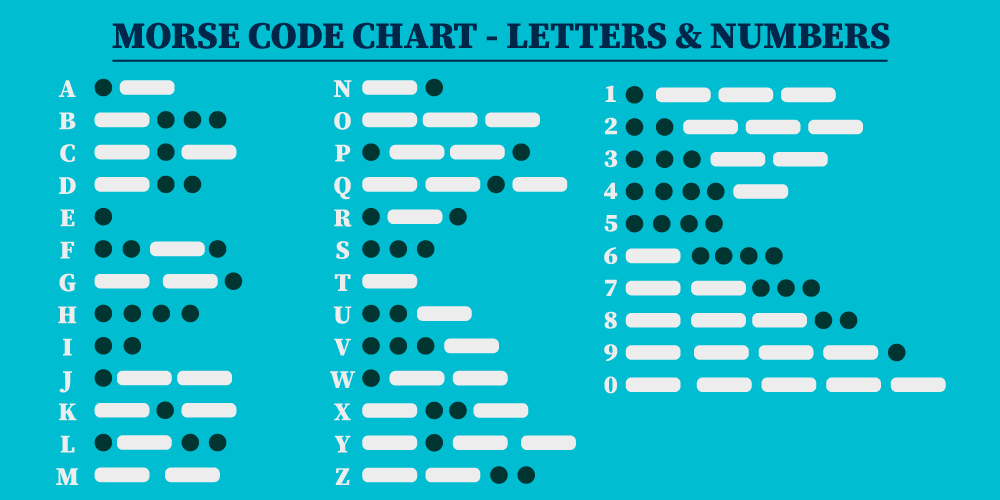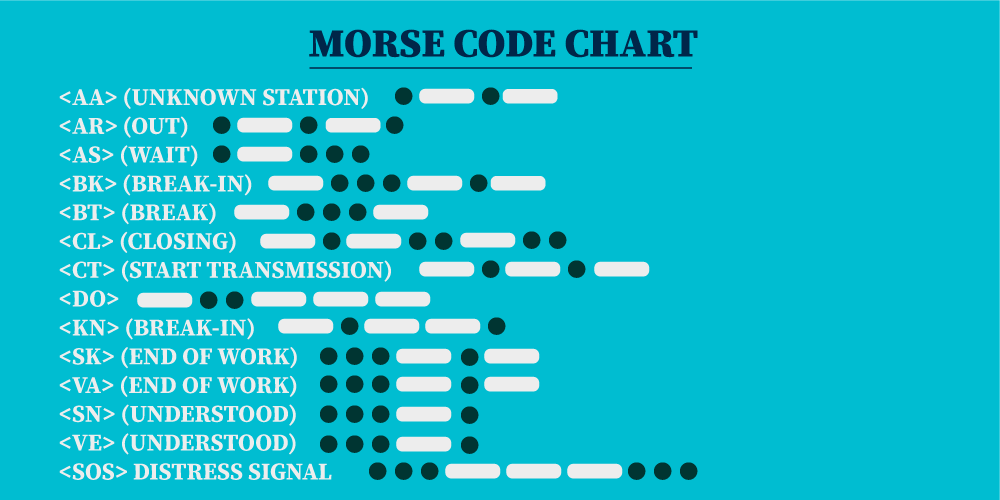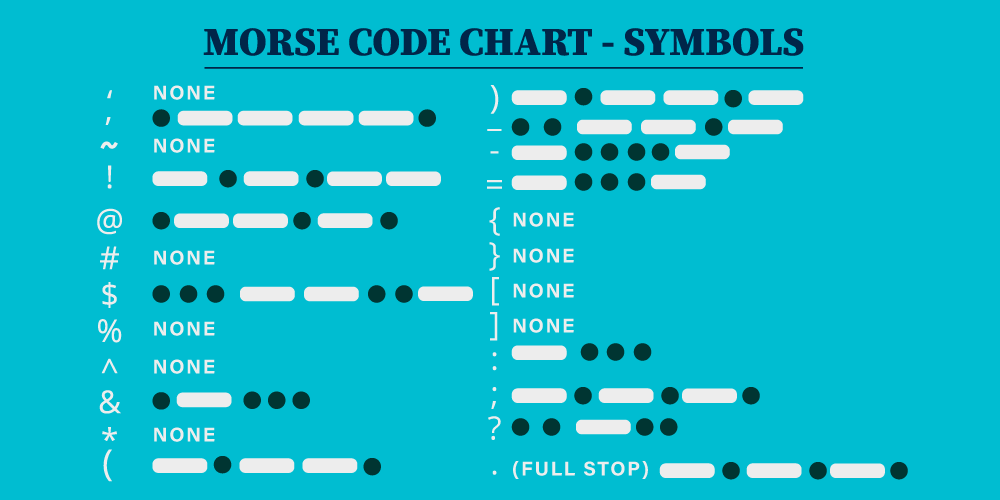Morse Code Translator
In the realm of communication, Morse code has etched its place in history as a reliable and versatile method of conveying messages. Developed by Samuel Morse and Alfred Vail in the early 1830s, Morse code uses a series of dots and dashes to represent letters and numbers. Over the years, it became a vital means of communication, particularly in telegraphy.

What Is Morse Code?
Morse code is a way to communicate using sounds or lights that only those who know the code can understand. The Morse code symbols are represented by unique sequences of dots and dashes that represent either a letter or a number. It is easy to translate the text if you are a Morse code reader. A dash has a duration three times longer than a dot. When it comes to communicating in an emergency, the SOS distress signals consist of three dots, three dashes, and three dots have proved to be very useful. As telephones (and, later, two-way radios and cell phones) became more popular, amateur radio operators began using English Morse code translators mostly for fun. Morse code remains reserved for certain amateur radio bands.
Example of Morse Code:
.... . .-.. .-.. --- / ..-. .-. --- -- / -.-. ..- -... .. -..- ... --- .-..
The History of Morse Code
The development of telegraph systems began in the 19th century after electromagnetism was discovered in 1820. A simple telegraph system was invented by Samuel Morse, Joseph Henry, and Alfred Vail using only electrical pulses and silence between the lines.
Morse's original telegraph receiver used clockwork and an electromagnet to mark the received pulses onto a paper tape. Operators could then translate the markings on the paper tape into text messages. Alfred Vail estimated the frequency of letters in the English language and assigned the letters most commonly used the shorter code sequences, while the more infrequent letters were assigned longer sequences. This code was first used in 1844 and was called Morse landline code, or American Morse code. Friedrich Clemens Gerke presented a revised and enhanced Morse code alphabet in 1848, which was later approved by the German-Austrian Telegraph Society. The International Morse Code standard (ITU), which is still in use today, was eventually the result of this in 1865.
How to Use Morse Code Translator?
Our Morse Code decoder properly converts your text into Morse code. Here is the method of how to use the Morse code converter.
Method:
- Enter English text into the input box
- After entering your English text, just click the translate button it automatically converts your text into Morse code.
- After the conversion of text into Morse code you can copy or download the results using the copy or download button.
- You can reset your input by using the delete button.
- You can also play your output results from an audio button by adjusting some settings like volume speed and pitch
- Or
- By adjusting volume and pitch settings, you can play your output results
Features of Morse Code Generator
While Morse Code Translators are powerful tools for engaging with Morse code, they do have certain limitations:

Text Input
Users can input text in the form of letters, numbers, and punctuation marks.
Morse Code Output
The translator converts the input text to Morse code symbols consisting of dots (.) and dashes (-). You can also convert the numbers in Morse code translator.
Text Output
After translating Morse code back to the text, the translator displays the translated message.
Support for International Characters
Our Morse code translators support international characters in Morse code translation.
Play Audio Button
Our Morse code translator allows you to play your output results in the form of audio by adjusting some audio settings.
Speed and Tone Adjustment
Our Morse code translator numbers may offer options to adjust the speed and tone of the Morse code output.
Error Handling
The translator may include error detection and correction mechanisms to ensure accurate translation, essential in noisy environments Morse code translator by sound.
Morse Code Chart
|
Text |
Morse Code |
Text |
Morse Code
|
|
a |
.- |
A |
.- |
|
b |
-… |
B |
-… |
|
c |
-.-. |
C |
-.-. |
|
d |
-.. |
D |
-.. |
|
e |
. |
E |
. |
|
f |
..-. |
F |
..-. |
|
g |
–. |
G |
–. |
|
h |
…. |
H |
…. |
|
i |
.. |
I |
.. |
|
j |
.— |
J |
.— |
|
k |
-.- |
K |
-.- |
|
l |
.-.. |
L |
.-.. |
|
m |
– |
M |
– |
|
n |
-. |
N |
-. |
|
o |
— |
O |
— |
|
p |
.–. |
P |
.–. |
|
q |
–.- |
Q |
–.- |
|
r |
.-. |
R |
.-. |
|
s |
… |
S |
… |
|
t |
- |
T |
- |
|
u |
..- |
U |
..- |
|
v |
…- |
V |
…- |
|
w |
.– |
W |
.– |
|
x |
-..- |
X |
-..- |
|
y |
-.– |
Y |
-.– |
|
z |
–.. |
Z |
–.. |
|
` |
None |
. (FULL STOP) |
.-.-.- |
|
’ |
.—-. |
0 |
—– |
|
~ |
None |
1 |
.—- |
|
! |
-.-.– |
2 |
..— |
|
@ |
.–.-. |
3 |
…– |
|
# |
None |
4 |
….- |
|
$ |
…-..- |
5 |
….. |
|
% |
None |
6 |
-…. |
|
^ |
None |
7 |
–… |
|
& |
.-… |
8 |
—.. |
|
* |
None |
9 |
—-. |
|
( |
-.–. |
(UNKNOWN STATION) |
.-.- |
|
) |
-.–.- |
(OUT) |
.-.-. |
|
_ |
..–.- |
(WAIT) |
.-… |
|
- |
-….- |
(BREAK-IN) |
-…-.- |
|
= |
-…- |
(BREAK) |
-…- |
|
+ |
.-.-. |
(CLOSING) |
-.-..-.. |
|
{ |
None |
(START TRANSMISSION) |
-.-.- |
|
[ |
None |
|
-..— |
|
} |
None |
(BREAK-IN) |
-.–. |
|
] |
None |
(END OF WORK) |
…-.- |
|
: |
—… |
(END OF WORK) |
…-.- |
|
; |
-.-.-. |
(UNDERSTOOD) |
…-. |
|
? |
..–.. |
(UNDERSTOOD) |
…-. |
|
à |
.–.- |
(DISTRESS SIGNAL) |
…—… |
|
å |
.–.- |
À |
.–.- |
|
ä |
.-.- |
Å |
.–.- |
|
ch |
—- |
Ä |
.-.- |
|
è |
.-..- |
CH |
—- |
|
é |
..-.. |
È |
.-..- |
|
ö |
—. |
É |
..-.. |
|
ü |
..– |
Ö |
—. |
|
ß |
…–.. |
Ü |
..– |
|
ñ |
–.– |
Ñ |
–.– |



